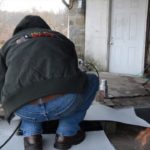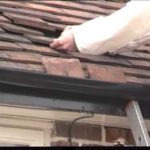Wood flooring is one of the most attractive options for the home. Even though it is more expensive than other forms of flooring, such as linoleum and carpet, it does have plenty of benefits that can overcome the extra cost. Here are six of the positive reasons to use wood flooring:
1) Long-lasting – one of the major reasons to install wood flooring is its ability to last. With minimal care and attention, this type of flooring has the potential to last for decades. The lifespan of other flooring can be much less. For instance, carpet may need to be replaced at five-year intervals because of the everyday wear and tear that leads to holes, stains and general shabbiness.
2) Easy to clean – the wood flooring is easy to clean with a regular light vacuum or simple brush. This is certain to benefit in homes with pets because the dirt and mud walked in from outside by cats and dogs is that much easier to clean up.
3) Very hygienic surface – wood is a very safe and hygienic surface that will not harbor dirt and parasites. Also, it is relatively easy to clean spills or unpleasant odors from pets. Alternative flooring surfaces like carpet is well-known to trap dust, fleas and dust mites, which can have a negative impact on allergy sufferers. In addition, tile and stone floors are just as hygienic as wood, but they don’t have the same feel and warmth offered by the wooden surface.
4) Under floor heating – the solid nature of wood flooring makes it a practical option to have under floor heating installed in the home. This type of heating is very efficient and removes the need to have heating units on show throughout the home.
5) Easy to repair – if the wood flooring ever starts to look tired and worn from everyday use, it is possible to renovate with a simple do-it-yourself sanding and sealing project. A high-quality job has the potential to completely return the flooring back to new. Also, this is a lot more cost efficient than having to replace with new, which is likely to be the standard practice with carpets.
6) Timeless appeal – the appeal of wood flooring has lasted for centuries and continues be just as popular now. Other flooring options like tile patterns, linoleum and carpet can have a style that is certain to lose its appeal over a period of time.






